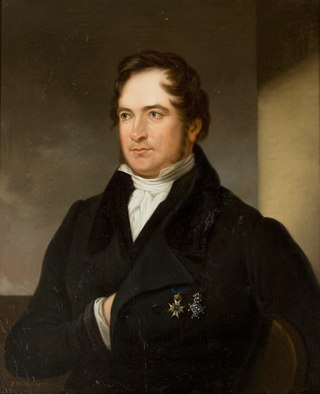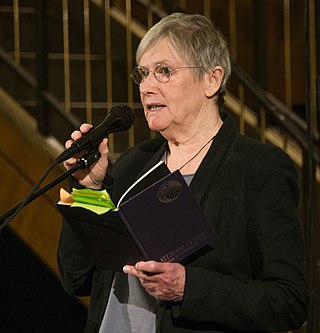
Erik Gustaf Geijer was a Swedish writer, historian, poet, romantic critic of political economy, philosopher, and composer. His writings served to promote Swedish National Romanticism. He was an influential advocate of conservatism, but switched to liberalism later in life.

Bollhuset, also called Stora Bollhuset, Bollhusteatern, and Gamla Bollhuset at various times, was the name of the first theater in Stockholm, Sweden; it was the first Swedish theater and the first real theater building in the whole of Scandinavia. It was built in 1627 for ball sports and used in this way for forty years. The name Lejonkulan, however, was, in fact, the name of a different building, which was also used by the same theater in the 17th century.
Björngårdsteatern, also called Christian Thums Commedi-huus and Theums Spelehus, was a theatre in Stockholm in Sweden, active between 1640 and 1655. It was possibly the oldest theatre in Scandinavia, but the information is scarce and it is unconfirmed if the theater permit was in fact used. It was in any event a popular tavern managed by Christian Thum.

Lejonkulan, was a historical theatre in Stockholm, Sweden, active in 1667–89. It's the historically second known theatre establishment of Stockholm, after Björngårdsteatern (1640–55).

Rower woman was a female profession in Stockholm, Sweden, from the 15th century until the early 20th century. It consisted of women who ran a form of early water taxi; rowing people between the islands of Stockholm, to and from the islands of the Stockholm archipelago, as well as to and from places around Lake Mälaren on the other side of Stockholm.
Somalis in Sweden are citizens and residents of Sweden who are of Somali ancestry or are Somali citizens. A large proportion of these emigrated after the civil war in Somalia, with most arriving in Sweden after the year 2006.

Josefina Leontina Amanda Wettergrund, née Lundberg pseudonym Lea, was a Swedish writer and poet. She was the editor of the family magazine Svalan in 1871–75.

The status and rights of Women in Sweden has changed several times throughout the history of Sweden. These changes have been affected by the culture, religion and laws of Sweden, as well as social discourses like the strong feminist movement.

Sophie Elkan née Salomon, was a Swedish writer and translator.

Onoff was a Swedish retail chain selling consumer electronics and major appliances. Founded in 1971, and later expanding into Finland and Estonia, the Swedish parent business went bankrupt in 2011, with some stores being purchased by rival chain Expert.

Magdalena Ribbing was a Swedish writer, journalist, etiquette expert and lecturer. She married radio journalist Thomas Hempel in 1981.

Ingela Strandberg is a Swedish poet, children's writer, novelist, playwright, translator, journalist and musician. She gained recognition with her novel Mannen som trodde att han var Fritiof Andersson in 1983.

Amalia Elisabeth Eriksson, née Lundström, was a Swedish businesswoman, known as the inventor of the Polkagris, a type of candy stick known to have inspired the candy cane, which she invented in Gränna, Sweden.

Events from the year 1810 in Sweden

Events from the year 1686 in Sweden
1720 års skråordning was a law reform introduced in Sweden in 1720. It replaced the 1669 års allmänna skråordning and, with additional modifications, regulated the guild system and business life in Sweden until the Fabriks och Handtwerksordning and Handelsordningen of 1846.

Yvonne Hirdman is a Swedish historian and gender researcher. She has received many awards for her work including the August Prize.
Eva Gothlin was a Swedish historian of ideas.
Maria Boberg (1784-1839), was a Swedish businessperson.
Charlotta Christina Boberg (1816–1898), was a Swedish businessperson.

















